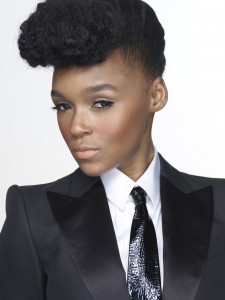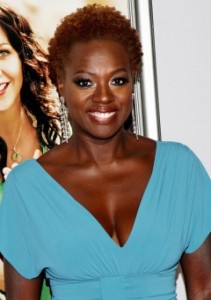Hair Wars: The Politics of Hair ‘YOU CAN TOUCH MY HAIR’ Exhibit
I’m Asian American and I’ve never really given that much thought to my hair … except that one time. I was on the swim team in high school in Southern California and my hair, from being outdoors in a chemically treated pool three hours a day, bleached out from solid black to dark, dark brown with red highlights. I thought the red streaks were kind of pretty until my swim team female friends ridiculed it saying that I had “Mexican” red streaked hair.
Believe me — in Southern California — this was not a compliment.
Hair as politics. Hmm…
I pulled the Top 10 Black Models in Fashion. Anyone who’s ever had a subscription to Vogue will know these lovelies.
Top black fashion models throughout the years prove that beauty has no boundaries. As fashion guru Franca Sozzani, Italian Vogue Editor-in-Chief, says, “the truth is that real beauty doesn’t care for skin color or nationality.”
7. Alek Wek
8. Jessica White
9. Sessilee Lopez
Are there famous African Americans women with natural hair and are they not just as beautiful as the women above?
Model Yasmin Warsame
Singer, songwriter and model Solange Knowles
Model Ajak Deng
Actress Tracey Ellis Ross
Singer Erykah Badu
Singer Janelle Monae
Actress Viola Davis
We called “You Can Touch My Hair” an exhibit for a reason. We could easily have called it a discussion, or just an event. We could’ve held up signs that said, “Ask me about my hair.” But, we called it “You Can Touch My Hair” for a reason. It wasn’t supposed to make anyone comfortable. But, we wanted to draw the parallel between a very literal display and the not-so-literal displays that happen in everyday life. There’s nothing wrong with being curious, but we do have to be aware of how we let our curiosities play out, and how we’re treating people as a result of them.
Transcript of video:
All things black. All things black, here. So we’re here to…
OK, cool. Is that like a big thing? People would wanna touch your hair?
Yeah.
That’s a thing?
Definitely.
Weird. Yeah. Cool.
So, where do you wanna touch?
You wanna touch my hair? I’m losing some, but…
You’re losing hair?
I’ll touch your hair.
Educate me, and then when you say you can touch my hair, people know what it is they’re actually touching. But if you’re just doing it, and you don’t know the concept behind, you don’t know the origin, you don’t know how it happens, or even how hard it is to take it, then you’ve not been educated. You’ve just had your whatever satisfied.
With the fascination, and reach and touch my hair, and something else goes down. So, like I said, we’re trying to save some lives out here. You might not wanna just go up to any random black woman and touch their hair, just because other people want you to touch theirs.
I have — I have happy hair, and I call it happy hair because it is unmolested. I don’t try to make it … I don’t fight it. I have a relationship with my hair. Not always. I’ve grown to this, and I’ve learned, particularly with black American women, most of us are taught, or start off, with the understanding that something is wrong with our hair. Whether it’s our grandmothers wrestling us to the ground to tame it into ponytails, there’s pain and crying and suffering and most people who are, who do our hair, their first lesson is to change it.
So, we kinda — it’s kinda like Adam and Eve — it’s like Eve, you start off wrong. Like, so for a lot of black American women, our hair, historically, has started off as wrong, and anyone who touches it, their first job is to change it. Change the texture. Change its nature. And so, when you start that way, the journey to finding happiness can be long.
Well, see, this is the challenge. Black people look — so many black people don’t even know their own hair grade. I’ve had friends in their 30’s look at me and be like, “Oh my gosh, guess what? I cut my hair, and guess what it does?” Because they were so young, myself included, when their hairs were permed, that they didn’t know what their hair looked like. So, when they actually got exposed to it, they were– we actually had to learn our hair in our 20’s and 30’s. We had to figure out how to tend to our hair.
I was so used to that kind of, you know, media, and what black women’s hair should look like. It should be straight, you know what I mean? So I wasn’t used to that. I had — it took a lot of soul-searching to get used to the texture that I had and be OK with it.
Because society doesn’t cater to kinky hair. It doesn’t cater to me being able to walk around with my own hair grade. It tells me that it’s not beautiful. It tells me that I’m not as beautiful as a woman of another race. It tells me to wear a weave. It tells me to wear braids. And it tells me, when I do those things, I immediately become more socially acceptable.
Now that people are starting to embrace it, everyone’s so curious, and they’re so fascinated, and they’re like, “Wow, you’re wearing your hair natural. That’s so different.”
I was actually at a Helen Hardy, which is similar to like a deli.
There was a moment, most recently, when I had locks, and I was in line at a coffee shop…
And I was waiting for my boss to finish paying, and a man who was staring at me the entire time in line, and I just thought he was just a relatively like nice person …
And I heard two women discussing if they could touch my hair. They didn’t ask me directly, but I overheard them. They were standing directly behind me.
And he made a beeline for me as I was just waiting by the door, and I guess he felt like we had some type of connection, because I went to go say hi to him, and his hand just like immediately just like went straight for my skull.
And they were, you know, saying, “Oh, what do you think, if we touched her hair, do you think she would mind if we touched her hair? What if I just put my hands in her hair?”
That was definitely eye-opening.
And, you know, I was a little … I was appalled. And so, I slightly turned around, to indicate that I could hear their conversation, and also to let them know, no, do not touch my hair.
Uh, I was definitely taken aback.
It felt invasive. It felt as if I was this, you know, curiosity.
I’ve never had somebody just– well, at that time in my life– I’d never had somebody come up to me and just throw their hand in my head, and not to mention, like, get all the way to my root. It kinda made me feel a little bit vulnerable.
It made me feel, you know, like, you know, something about me was so totally odd and strange, you know, that it was, you know, OK for them, one, to just come up and touch it, or OK, or two, just to have this conversation behind my back about it.
But, at the same time, it was … it made me laugh. It’s ballsy, so hats off to him.
Curious, lack of information, entitlement, no home training?
I think– I think he was curious. And, again, I feel that he thought he was… he was comfortable enough to actually, you know, ask me, and really go for the gusto. So, I just really think it comes down to curiosity.
I’m not– I’m not interested in having a conversation where I make people feel better about my hair, or they finally get to learn what my hair texture feels like. Have an intimate relationship with a black person– do you have a black friend? Have an intimate relationship with a black person. You can ask them.
It’s funny because they were saying that we need to …
Yeah, that we need to control, or we can help assuage people’s …
We can control, by saying, no, you cannot. You finally have the voice. We’re not sour. We did not have that option …
One of the biggest criticisms of the “You Can Touch My Hair” exhibit was it reminded people of a woman named Sarah “Saartjie” Baartman. Sarah Baartman was an African woman, who in the early 1800s was encouraged to go to Europe, only to, literally, be put on display. The Europeans of that time hadn’t seen anyone that looked like her, because she was physically different. So, she was a curiosity. Something– something strange.
Fast forward to today, and yet again, we have people curious about a physical difference. Yes, curiosity is the first step to enlightenment, but we have to question the nature of our curiosity. Is it innocent curiosity, and even if it is, was it that same type of curiosity that led to Sarah being put on display?
We called “You Can Touch My Hair” an exhibit for a reason. We could easily have called it a discussion, or just an event. We could’ve held up signs that said, “Ask me about my hair.” But, we called it “You Can Touch My Hair” for a reason. It wasn’t supposed to make anyone comfortable. But, we wanted to draw the parallel between a very literal display and the not-so-literal displays that happen in everyday life. There’s nothing wrong with being curious, but we do have to be aware of how we let our curiosities play out, and how we’re treating people as a result of them.



















How did things get so bad for black women’s hair? I thought things had changed in the seventies when natural hair flourished on black women’s heads. I thought we had reached an Age of Enlightenment, never dreaming that I was experiencing a temporary blossoming of acceptance of racial differences. Soon black women were pressured to go back under a “chemical veil”, pressured, like Muslim women, to conceal their natural beauty. When did that happen? Around the time Ronald Reagan was elected?
Hi Maura,
I wonder, too, when this happened that black women felt pressured to change their hair. I’m just glad that there are role models with natural hair like Solange Knowles and Yasmin Warsame. That has to help to have role models!